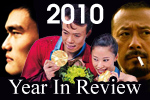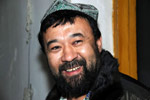View
Debate: Chinese mothers
Updated: 2011-02-09 08:11
By Li Xing (China Daily)
The high-profile debate over Chinese mothers continues. A China Daily senior editor says Chinese education needs to incorporate broader values but an education researcher praises China's educational achievements
Besides rote learning, add values
The heated debate over whether Chinese or Western mothers are superior has spread far and wide around the world. Amy Chua, the Yale law professor who initiated the discussion, had received some 7,722 comments on the Wall Street Journal website alone by Monday.
However, the debate mostly focuses on what to do to ensure children excel in academic studies or future career development. An essential point is missing: How to bring up our children so they will become conscientious citizens who value teamwork, creativity, individuality and independence.
With her book and essay, Amy Chua enhances the conviction of many Chinese, as well as Western parents and educators, who believe strict rules and rote learning along with "humiliation" are the prerequisites for academic and professional excellence.
When I raised the question - in my column published on Jan 28 - whether rote learning is conducive to nurturing creativity in children, one reader responded by arguing that rote learning for young children is a must.
Under the online name huaqiqiao, he wrote: "Children and young people have fantastic memories, and that's the time to build their basic skills...
"Concentrating on 'creativity' at that age is a waste of time, many 'creative' youngsters in the West, are unemployed. Einstein himself was not schooled in the 'modern' manner, but in traditional Old Europe gymnasia and universities, that all stressed rote learning and drill-and-practice."
For an example of "humiliation", Chua writes of how she could threaten to starve her younger daughter when she couldn't play some tunes. But I don't believe excessive rote learning along with such humiliations should be established as a role model for parents to emulate.
In China, we've heard plenty of stories of children who are asked to write one Chinese character 100 or more times after they have made an error. We've also read quite a number of media reports describing how these harsh methods have resulted in the sufferings and even suicides of children. The suicide rate among young Asian Americans is higher than the United States' average.
While Chua and a lot of Chinese parents parade their children's achievements, we should also recall stories of ancient Chinese mothers who instilled a broader range of values in their children.
For example, the mother of Mencius, a great ancient Chinese scholar thought to have lived 372 - 289 BC, moved their home three times to make sure that her son grew up in a neighborhood that respected scholarly teachings. She cut pieces of cloth she'd just woven to show Mencius that his lack of perseverance in his studies would only result in failures like the torn pieces of cloth.
The mother of Kou Zhun (961-1023) taught Kou to read and write while supporting the family by weaving. She left a painting with the family servant before she died. When Kou became prime minister and planned to throw a lavish party to celebrate his birthday, the servant opened the painting, in which Kou's mother preached frugality and prudence.
We must reflect on whether our conventional education methods, from rote learning and shaming, to the over-emphasis on individual performance, have affected Chinese children's overall development.
Education should not only be about academic success and future careers; it should also be nurturing innovation, responsibility, teamwork, perseverance and independence. But these are not discussed in either Chua's book or in many of the commentaries.
In fact, many educators now fear that our children's upbringing is distorted. Leading educator Sun Yunxiao cited a test in which two plates of chocolates along with a bell were placed before 100 Chinese and 100 Australian 5-year olds. The children were told that they could get the plate with fewer chocolates if they immediately rang the bell, but they could get the plate with more chocolates if they chose to wait 15 minutes.
At the end of the test, 80 percent of the Chinese children had grabbed the smaller number of chocolates, while 66 percent of the Australian children waited for 15 minutes for the larger share. According to Sun, the Chinese children not only failed to demonstrate self-discipline and patience, they also lacked responsibility and perseverance.
Chinese scholars have also cited the fact that although Chinese students have won numerous international contests in mathematics, they have not yet scored high in international contests for sciences and engineering. None of the scientific and technological breakthroughs in the 20th century was Chinese.
There is no single education method that applies to children of all races and all countries. So it is time to stop arguing about whose mothers are superior, and explore a variety of methods from both the East and West that foster responsible and innovative citizenship.
The author is assistant editor-in-chief of China Daily.
Specials

Spring Festival
The Spring Festival is the most important traditional festival for family reunions.

Top 10
A summary of the major events both inside and outside China.

A role model
Alimjan Halik had been selected as the "Cyberspace Personality Who Moved the Hearts of the Chinese in 2010".